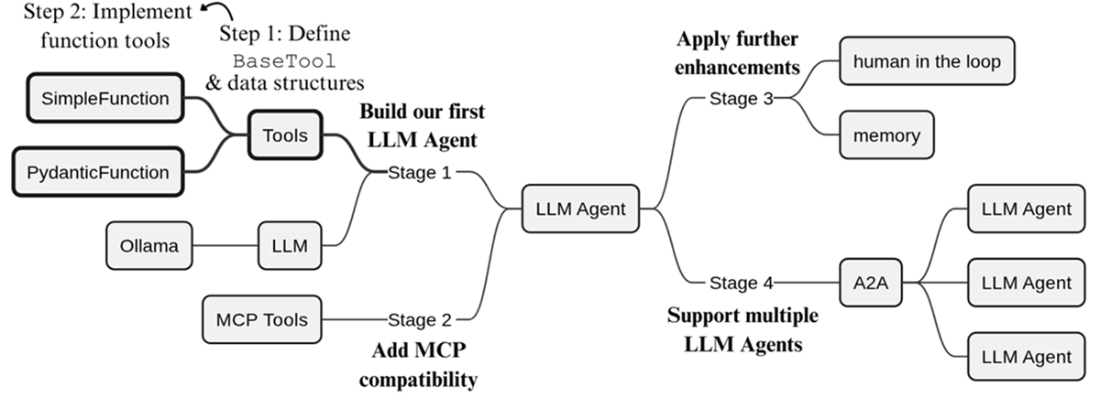2 Working with Tools
This chapter covers
- Specifying the base class for tools to standardize how they are used in our framework
- Defining the data structures for facilitating a tool-call process
- Turning Python functions into tools to use with LLMs and LLM agents
You now know that tools are a crucial part of LLM agents. Tools, such as those for performing web searches, plotting data, and executing code in a sandboxed environment, increase the potential of LLM agents and expand the range of tasks they can perform.
Equipping an LLM with a tool requires us to provide a textual description of the tool so that the LLM can understand how to use it. LLMs can use a tool through the tool-calling process, which involves the LLM generating a tool-call request, invoking the tool, and finally returning the result to the LLM for synthesis and response.
The focus of this chapter, as illustrated in figure 2.1, is to build the required infrastructure for defining tools and how they can be used. We’ll package all our code in our own LLM agent framework, called llm-agents-from-scratch.
Figure 2.1 The focus of the current chapter, through the lens of our build plan introduced in Chapter 1. Before we can build an LLM agent, we first need to properly define tools and how they can be used within our framework.
